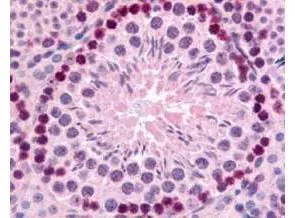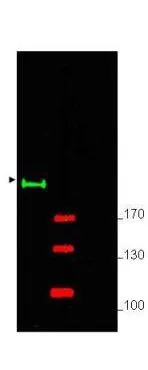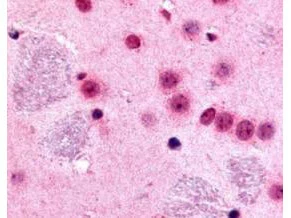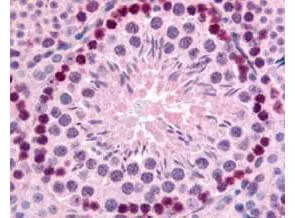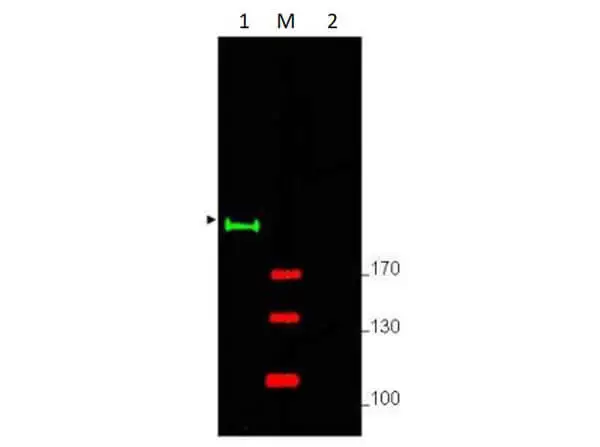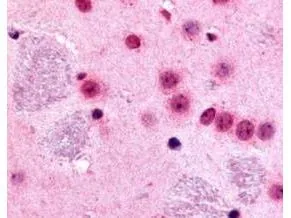
GeneTexs Affinity Purified anti-mouse Gli-2 antibody (GTX27195) was used at 10 microg/ml to evaluate staining on several mouse tissues. Moderate to strong staining was seen on many tissues with low background staining. This image shows Gli-2 staining of mouse brain. Tissue was formalin-fixed and paraffin embedded.
Gli2 antibody
GTX27195
ApplicationsWestern Blot, ELISA, ImmunoHistoChemistry, ImmunoHistoChemistry Frozen, ImmunoHistoChemistry Paraffin
Product group Antibodies
ReactivityHuman, Mouse
TargetGli2
Overview
- SupplierGeneTex
- Product NameGli2 antibody
- Delivery Days Customer9
- Application Supplier NoteWB: 1:500-1:2000. IHC-P: 2-20 microg/mL. ELISA: 1:15000-1:60000. *Optimal dilutions/concentrations should be determined by the researcher.Not tested in other applications.
- ApplicationsWestern Blot, ELISA, ImmunoHistoChemistry, ImmunoHistoChemistry Frozen, ImmunoHistoChemistry Paraffin
- CertificationResearch Use Only
- ClonalityPolyclonal
- Concentration1.02 mg/ml
- ConjugateUnconjugated
- Gene ID14633
- Target nameGli2
- Target descriptionGLI-Kruppel family member GLI2
- Target synonymsTax helper protein; zinc finger protein GLI2
- HostRabbit
- IsotypeIgG
- Protein IDQ0VGT2
- Protein NameZinc finger protein GLI2
- Scientific DescriptionThis protein belongs to the C2H2-type zinc finger protein subclass of the Gli family. Members of this subclass are characterized as transcription factors that bind DNA through zinc finger motifs. These motifs contain conserved H-C links. Gli family zinc finger proteins are mediators of Sonic hedgehog (Shh) signaling and they are implicated as potent oncogenes in the embryonal carcinoma cell. The protein encoded by this gene localizes to the cytoplasm and activates patched Drosophila homolog (PTCH) gene expression. Gli2 is also thought to play a role during embryogenesis. The encoded protein is associated with several phenotypes- Greig cephalopolysyndactyly syndrome, Pallister-Hall syndrome, preaxial polydactyly type IV, postaxial polydactyly types A1 and B.
- ReactivityHuman, Mouse
- Storage Instruction-20°C or -80°C,2°C to 8°C
- UNSPSC12352203
References
- Identification of Human Cutaneous Basal Cell Carcinoma Cancer Stem Cells. Morgan H et al., 2019, Methods Mol BiolRead more
- Crosstalk between Notch and Sonic hedgehog signaling in a mouse model of amyotrophic lateral sclerosis. Ma X et al., 2017 Feb 8, NeuroreportRead more
- CD200-expressing human basal cell carcinoma cells initiate tumor growth. Colmont CS et al., 2013 Jan 22, Proc Natl Acad Sci U S ARead more

